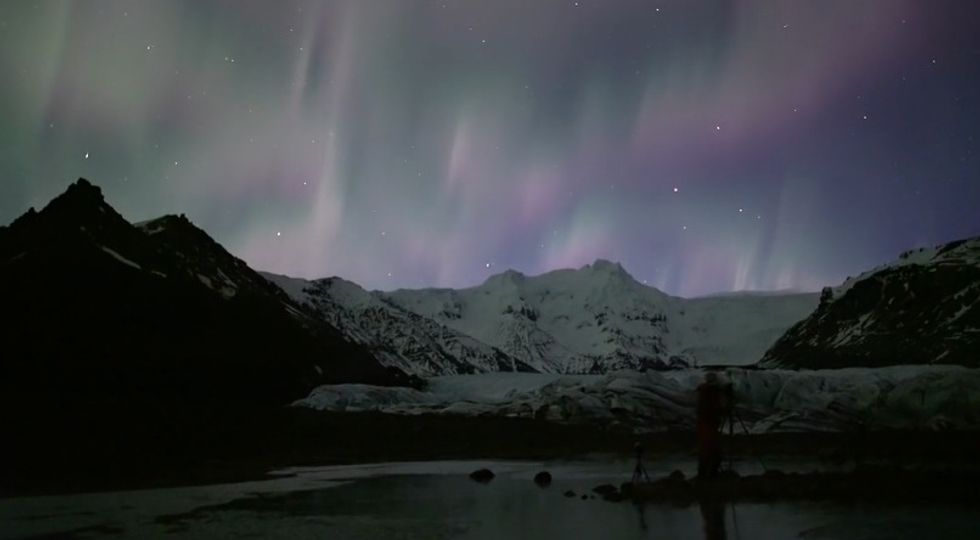
Image source: Vimeo

The northern lights might come in a variety of swirling colors, but that's not all.
A rare type of "pulsating" aurora was recently caught on camera over the Svinafellsjokull Glacier in Iceland by photographer Stephane Vetter. His footage was posted a couple of weeks ago, but it shows an event that took place on March 22.
Check it out:
According to NASA, "no one is sure" why some auroras pulsate.
"Although this unusual behavior has been known for a long time, the cause remains an active topic of research," it said.
Here's a bit more on research published a few years ago regarding pulsating aurora:
Pulsating auroras are a visible manifestation of modulation in the fluxes of magnetospheric electrons precipitating into the Earth's ionosphere. They are usually observed at the morning hours during a substorm recovery phase. This auroral phenomenon has been studied for a long time but the question of its generation is still more or less open. It is widely believed that whistler waves play an important role in the generation of pulsations. Various theories of pulsating auroras are based on the wave-particle interaction between VLF waves and electrons in the equatorial region of the magnetosphere.
The video shot by Vetter shows real-time — not time-lapsed — pusations of the aurora, which themselves are caused by energetic particles that are spewed out from the sun and then interact with Earth's atmosphere, resulting in the lights.
NASA said that the pulsations in Vetter's video are "somewhat unusual" because they're at a faster pace than what's usually seen.
(H/T: io9)